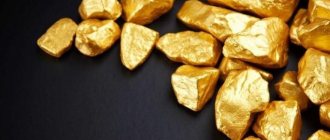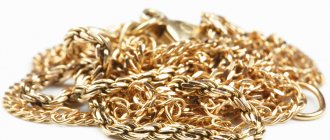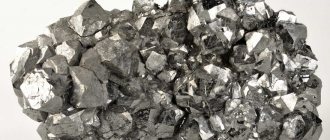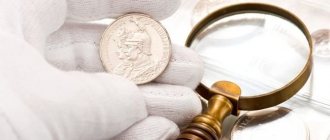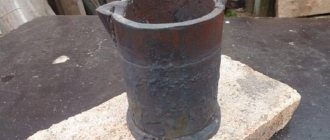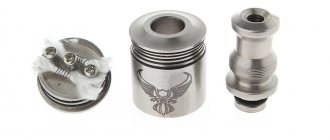Hello, dear gold lovers! Many people admire its pleasant shine, although not everyone knows that it is due to the structure of its energy levels and the highest number of electrons among metals. Every woman wants to feel the pleasant weight of a massive precious necklace on her neck, not realizing that the reason for the large weight of gold jewelry is the high density of gold. Read this article - and you can easily figure out what this value means and what practical significance it has.
Properties and composition of gold
It was the properties of gold that determined this metal to be noble. The main chemical property of a precious metal for us is its inertness - in our usual environment, it remains unchanged for thousands of years, without oxidizing or losing its appearance.
Basic physical properties of Au:
- softness;
- ductility;
- plastic;
- low resistance;
- high thermal conductivity;
- high density.
These qualities are what made the yellow metal so valuable.
The composition of 999.9 fine gold is pure Aurum, its density is 19.30 grams per cubic centimeter or 19,300 kg per m³.
It is known that, due to its softness and high specific gravity, products made from high-grade gold are impractical, so jewelers use the precious metal in their products only in an alloy with others - to give strength or a different shade. Thus, the traditional 585 standard contains, in addition to gold, copper and silver.
Density of gold depending on the sample
In terms of density, the yellow metal is surpassed only by platinum. All other metals in the alloy reduce the overall density of the product.
This table clearly shows the correlation between density and ligature.
| Try | Color | Compound | Density g/m³ |
| 750 | Yellow | Au, Ag, copper Au, Ag Au, Ag, palladium Au, Ag, nickel, zinc | 15,45 15,96 16,44 15,38 |
| Green | |||
| White | |||
| White | |||
| 585 | Red | Au, Ag, copper Au, Ag, copper Au, Ag, copper Au, Ag, palladium Au, Ag, nickel, zinc, copper | 13,24 13,60 13,92 14,74 12,85 |
| Yellow | |||
| Green | |||
| White | |||
| White | |||
| 375 | Red | Au, Ag, copper | 11,54 |
| 375 | Pink | Au, Ag, palladium, copper | 11,56 |
How does temperature affect density?
It is interesting that the indicated values are typical only for normal environmental conditions and a temperature of 20 ° C. The higher the temperature, the lower the density, and vice versa. This dependence is typical for most substances, except water, whose density is maximum at +4, and decreases with decreasing temperature.
Use of artificial graphite
You already know the density of graphite. However, it is also important to study the area of use of the artificial variety. It is used in all industries. Electrodes are made from coarse grains. Fine-grained structural material is used for the production of shaped products that have complex shapes.
The use of artificial mineral made it possible to achieve high precision in the manufacture of parts. Today, equipment is being produced that fully meets the standards of the present century.
How to distinguish real yellow metal from a fake
Understanding the essence of density as a physical quantity will help us distinguish real gold from counterfeit gold. I'll tell you how to do this.
Au has virtually the highest density of any precious metal other than platinum, meaning that almost any gold item will weigh more than a gram.
The easiest way is to weigh the jewelry. The method is suitable for small openwork decorations.
Massive rings and chains, bracelets and earrings are checked based on the ratio of mass to volume.
We will need:
- precision scales with division values down to a hundredth of a gram;
- beaker with volume graduation. The narrower it is, the higher the accuracy of the determined value. It can be purchased at chemical stores and sometimes in pharmacies.
For clarity, I will try to determine the authenticity (maybe the purity) of my rose gold bracelet:
- I weigh the bracelet on the scales. It weighs 4.62 grams.
- I pour water into a beaker and put the bracelet in it. The water should completely cover the decoration. The bracelet displaced 0.4 centimeters of cubic water. That is, I have a beaker with a CD of 0.1 cm3, the water level has risen by 4 divisions.
- I make the calculation: 4.62/0.4=11.55.
- I compare the obtained value with the table of metal densities and the table of Au density (depending on the sample).
Palladium is close to the obtained values - 12.2, lead - 11.34, silver - 10.49. But my bracelet is a nice shade of pink, which means it most likely contains gold and copper. From the table we see that the density of my bracelet corresponds to 375 samples - the average value of gold, silver, palladium and copper.
The amount of pure element in the alloy is determined using the molar mass of gold using the formula M = m/n. The molar mass of Au is 196.9665 g/mol. In my bracelet weighing 4.62 g and 375 samples, there is 4.63 * 0.375 = 1.74 g of gold, 1.74 g / 196.9665 g / mol = 0.001 mol of pure gold.
Gemini of gold
It happens that unscrupulous jewelers, knowing that the density of the yellow metal or its alloys is close in value to base metals, use this value for criminal purposes. Thus, lead with gold plating can easily pass for 375 standard, and tungsten, which has a molar mass close to platinum group metals, is often passed off by jewelers as precious metals.
Crystal cell
The crystal lattice of graphite provides for the presence of carbon atoms. It has a layered structure. The distance between individual layers can reach 0.335 nm. In a lattice, carbon atoms bond with three other carbon atoms.
The lattice can be hexagonal or rhombohedral. In each layer, the carbon atoms are located opposite the central parts of the hexagons. The latter are located in adjacent layers, then the position of the layers is repeated, which happens after one.
Drop some iodine
Rub the product on jeans or other thick fabric, then drop iodine on this place on the metal. High standard gold does not darken. If the metal has darkened (this may appear within a minute), the product is not genuine or the standard is not too high.
But brass and copper do not change color from iodine either. So this testing method is good for high-grade gold, but it is not enough on its own.
We do not recommend testing products with iodine levels of 585 or lower. After iodine, you will definitely have to polish them or remove stains with ammonia; traces may remain.
What is metal specific gravity or density
This is a physical characteristic calculated as the ratio of body weight to the volume it occupies.
Specific gravity is expressed in kilograms per cubic meter (kg/m3). In practice, this means how much a cube with sides of 1 m * 1 m * 1 m will weigh.
The specific gravity of gold is calculated using the formula:
P = m / V, where P is the density, m is the mass of the object, and V is its volume.
Density determines the mass of a product made from it. For example, an Au ingot with a volume of 1 m3 will weigh 19,300 kg, and lithium only 534 kg, since its specific gravity is much lower.
Units
In D. Mendeleev’s periodic table of chemical elements, this noble metal, as an element, occupies 11th place. The specific gravity of gold is measured in various ways:
Mass and density are interrelated. Provided that the mass of the precious metal is indicated in grams per cubic meter, the same data will also be an analogue of the density of the metal. That is why, knowing the density of gold and silver, you can determine the mass of the precious metal.
The specific gravity of an element can be calculated using a special formula. It looks like this: Y (specific gravity of the element) = P (real weight) / V (density).
Calculation using this formula is used exclusively for gold products. When calculating the mass of other elements, there is likely to be a large error.
Gold is one of the heaviest metals. It ranks seventh among other metals. The density of the yellow precious metal is 19.32 g per cubic centimeter. For clarity, a small ball made of pure noble metal with a diameter of only 4.6 cm has a weight of 1 kg.
Due to the high density of the yellow precious metal, its extraction becomes easy. During the washing process, the rocks are screened out from nuggets and gold sand.
Despite its significant weight , gold in its pure form is very rarely used . This is due to the fact that yellow metal is very soft. Products made from it are easily bent, broken, deformed and do not have sufficient strength. That is why other metals are added to the alloy to increase its hardness. The most commonly used elements are palladium, silver, copper, platinum, nickel and other elements that are not necessarily included in the noble list. The final mass of the product directly depends on what metals and in what quantities are included in the alloy. But the density indicator will remain unchanged.
Hydrostatic testing of jewelry
You can identify a fake piece of jewelry by its density.
You can do this in the following way:
| 1) Place the product on the scale, write down the dry weight (m) | |
| 2) Place a plastic transparent cup on the scale, 2/3 filled with water, reset the scale readings to zero | |
| 3) Immerse the product suspended on a thread into water so that it does not touch the walls and bottom, but so that it is completely immersed in water, write down the scale readings (v) |
Next is a simple calculation using the formula p=m/v and determination of the sample using the indicators from the table.
Ring weight dry (m) = 28g, weight in water (v) = 3.12g, 28:3.12=8.97
Judging by this value, it is clear that this is not gold.
The densities of the most popular samples are given below:
Please note that this method will not work for hollow items or items that have a large number of inserts.
Video on checking jewelry using the hydrostatic method.
Newsletter for pawnshop managers
Source
Invest today
The algorithm of actions is as follows:
We calculate the density of gold using the formula:
P = m / V = 5.77 / 0.5 = 11.54 g/cm3
The resulting value corresponds to the value for the 375 red gold alloy.
But unfortunately, the experiment cannot 100% confirm that precious metal was used to make the chain.
Characteristics of individual alloys
The density of a material is a physical property that is determined by the mass of a certain unit of volume. The measurement of the parameter is determined by the ratio of the mass and size of the body.
An alloy of gold with other metals is indicated by a breakdown, which is applied directly to the product.
Rare samples
The highest and rarest standard is 999. It cannot be found on jewelry. This means pure precious metal that is not used for production. The density of 999 gold is 19.3 grams per cubic centimeter.
Slightly more than 96% of pure gold is contained in products marked 958. However, they are extremely rare due to the fragility of the metal and the impossibility of polishing it. The density of this material is 18.3 g/cm3.
900 and 917 samples are rare in Russia. High-quality jewelry is made only to order. Previously, coins were minted from gold metal of the highest standard , which is why the samples are called coin samples. The composition of gold in them is 90%. The alloy contains silver and copper in prescribed proportions. Density indicators for such alloys vary from 17.3 to 17.9 grams per cubic centimeter.
75.5% of the precious metal is contained in products of 750 standard. Additionally, palladium, copper, platinum, silver, and nickel are introduced into the alloy. A fairly durable metal that can be processed, polished and has good strength characteristics. The density of 750 gold varies from 14.4 to 17.4 grams per cubic centimeter.
Most Popular
585 standard (583 in the Soviet Union) contains more than 58% pure yellow metal. The main components of the alloy are silver, nickel, palladium and copper. This is the most popular alloy in jewelry. It is durable, hard, and easy to work with. Most of the jewelry is made from 585 alloy. Its average density is 13 g/cm3.
Products marked 500 contain 50.5% gold. The remaining 49.5% is made up of copper and silver, and not in equal proportions, so the color of the product directly depends on the amount of silver in the alloy. The density of the alloy is 12.3 g per cubic centimeter.
375 standard is considered the cheapest. It contains 38% pure yellow precious metal, the rest is occupied by copper and silver. Low-grade gold tends to deteriorate in appearance when exposed to oxygen and tarnishes over time. The density of the alloy is 11.5 g/cm3.
As a rule, the alloy contains only elements that have a similar specific gravity and density to gold. However, there is a danger of getting a fake instead of gold jewelry. Most often, tungsten is disguised as a yellow precious metal. It has similar performance and appearance. It is extremely difficult to distinguish a fake from the original.
Don't try it on your teeth!
Gold is a soft metal, so if you squeeze it hard with your teeth, marks will appear. Agree, the seller will not like it and will force you to buy.
Athletes test their medals for the sake of photos. Moreover, gold medals are actually just gold plated.
By the way, fake aluminum behaves exactly the same way, so if the seller insists on a “teeth test”, don’t be fooled.
On the other hand, only a new product does not have even small scratches on the surface. If a person claims to be selling his used gold, but it appears to have only come from a factory, something is wrong here.
